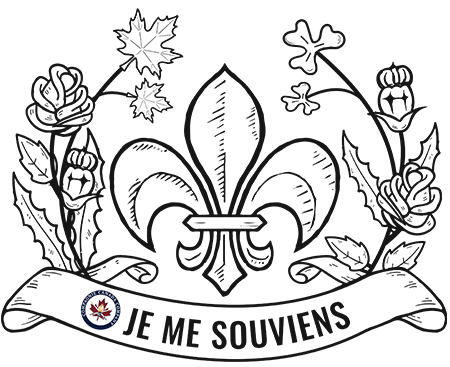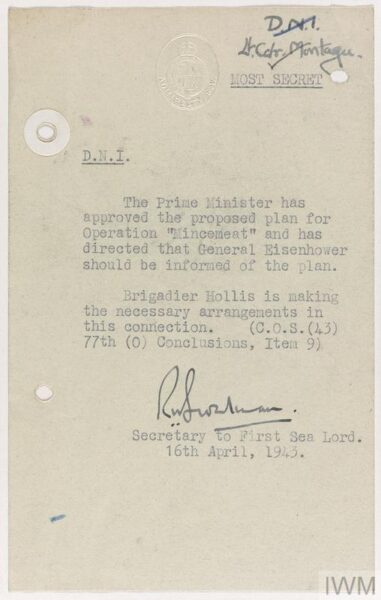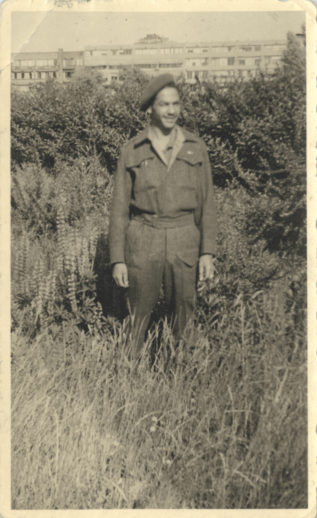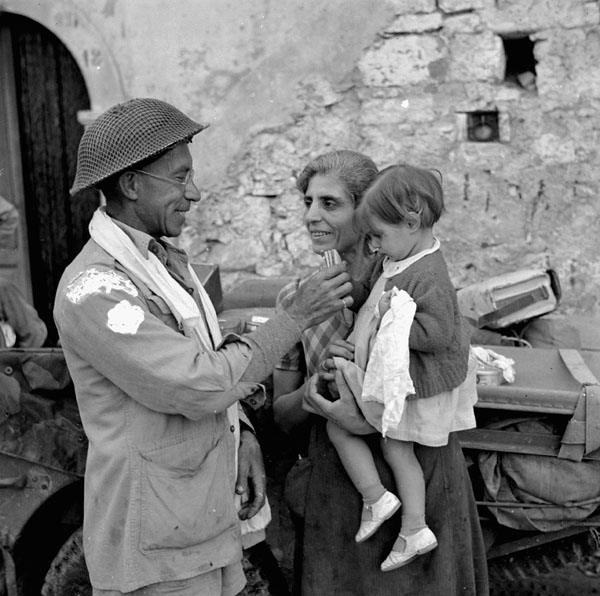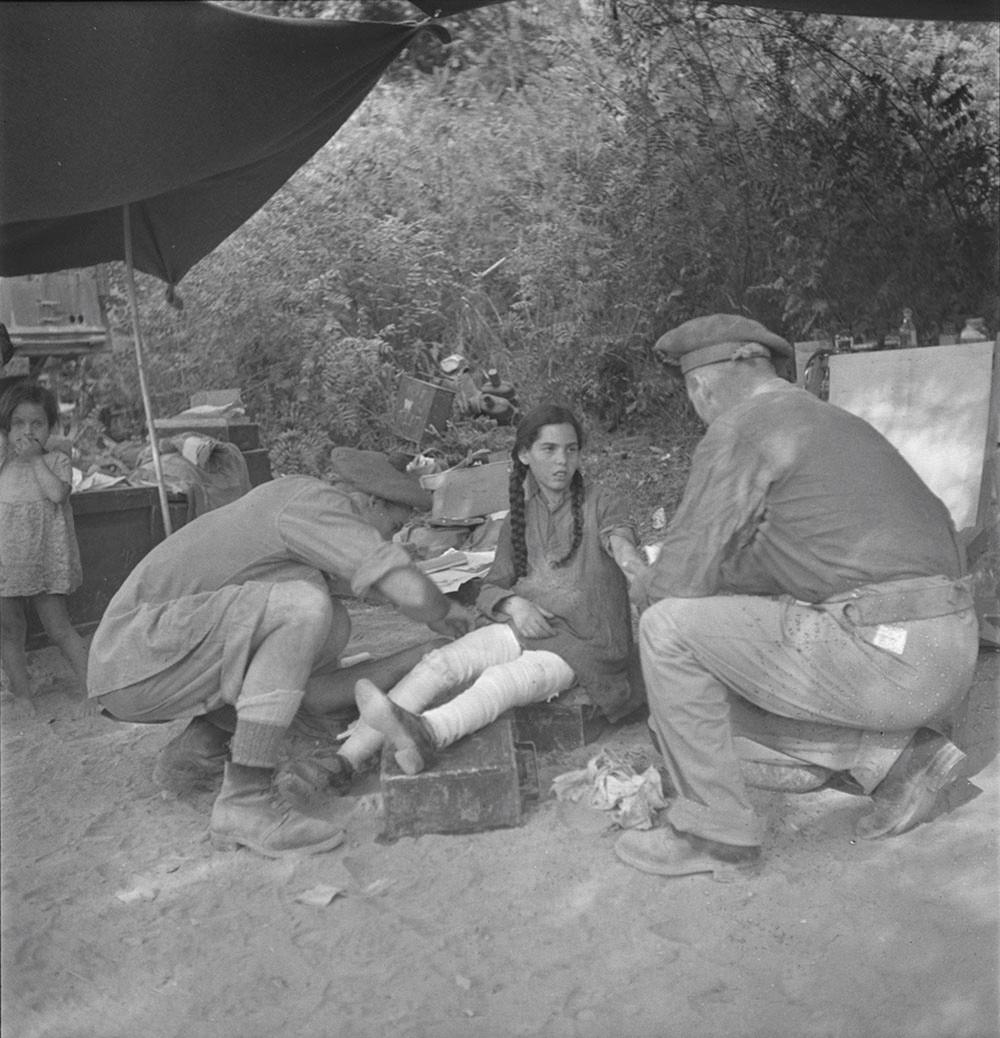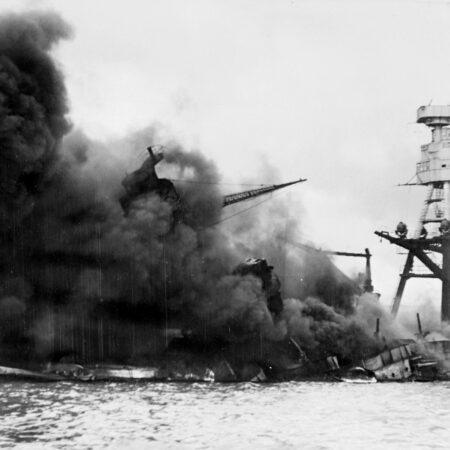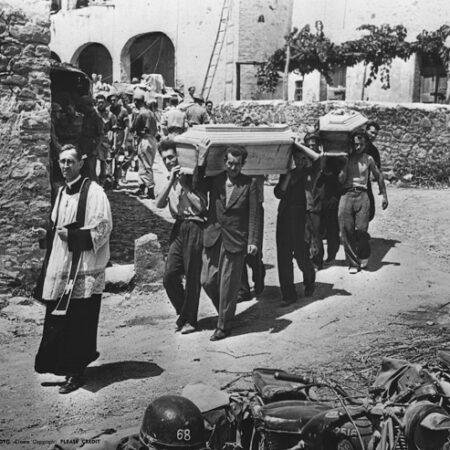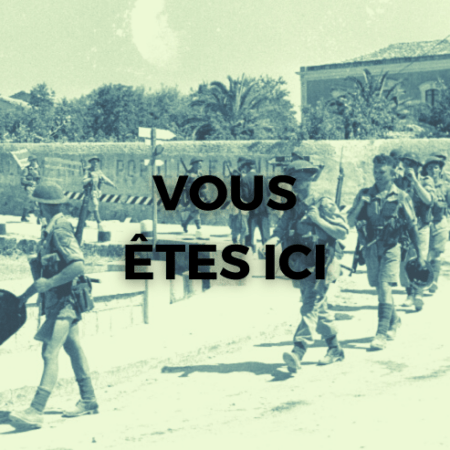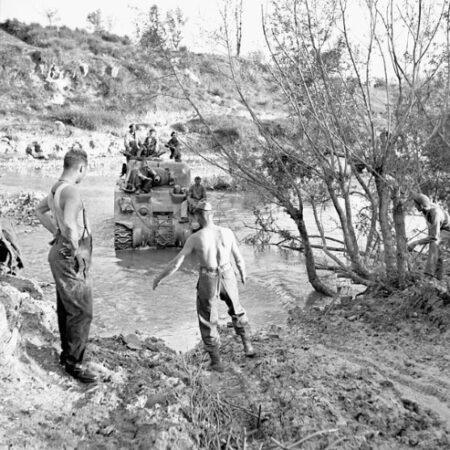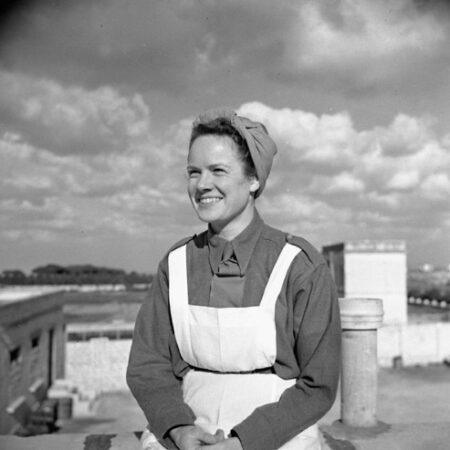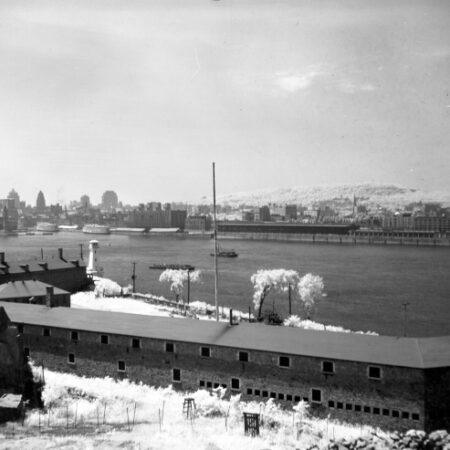OPÉRATION HUSKY :
L’INVASION DE LA SICILE
LES PREMIERS DÉBARQUEMENTS
En préparation de l’invasion de la Sicile, les Alliés débutent l’opération Barclay : une vaste campagne de tromperies pour duper les armées ennemies. Le but de la manœuvre est de faire croire qu’une invasion des Balkans serait imminente et de forcer l’ennemi à y transférer une partie de ses forces pour cacher un vrai débarquement en Sicile. Pour ce faire, les Alliés utilisent plusieurs stratagèmes : organisation de faux mouvements de troupes, production de transmissions radio erronées et obtention de ressources importantes en Grèce pour faire croire qu’une opération s’y prépare.
Cependant, l’un des stratagèmes les plus importants reste l’opération Mincemeat. En janvier 1943, le service secret britannique obtient le corps de Glyndwr Michael, un itinérant sans contact étant décédé dans les rues de Londres. Avec une fausse identité, un uniforme de la marine britannique et divers documents falsifiés, le corps est ensuite laissé délibérément sur les côtes espagnoles, où les autorités avertissent l’armée allemande. Mincemeat est un succès et, lorsque vient le temps d’attaquer la Sicile, les armées allemandes et italiennes sont prises de court.
OPÉRATION HUSKY
Huron Brant :
héros à Grammichele
Membre de la communauté Kenhtè:ke de la nation kanien’kéha, en Ontario, Huron Brant s’enrôle dans le Hastings and Prince Edward Regiment. En Italie, Brant subit les contrecoups d’une campagne longue et brutale et rencontre deux fois un psychiatre qui le diagnostique avec un trouble de stress post-traumatique. Sans nouvelle de sa femme depuis plusieurs mois, Brant aurait demandé à pouvoir retourner chez lui, mais il sera plutôt renvoyé au front. En octobre 1944, dans le nord de l’Italie, Brant et son unité sont pris par des tirs allemands et sont tués au combat (source : Anciens Combattants Canada).
Alvie Burden :
une longue carrière méconnue
Alvie Burden est né à Tisdale, en Saskatchewan, le 30 janvier 1922. À l’âge de 19 ans, il s’enrôle dans le Saskatoon Light Infantry où on lui demande de tester des produits chimiques en échange de quelques petits bénéfices. Durant six semaines, Burden se fait ainsi asperger de toutes sortes de gaz dangereux dans un champ. Par la suite, le jeune homme est envoyé en Sicile et en Italie comme estafette – un soldat en moto qui doit voyager d’une position à une autre pour passer des messages. En Italie, il est blessé le 20 septembre 1944 lorsqu’un obus ennemi le projette dans les airs et le touche à la tête et aux poignets. Heureusement, Burden se rétablit bien. Il est ensuite envoyé aux Pays-Bas où il demeure jusqu’à la fin de la guerre.
DÉCOUVREZ EN IMAGES L’INVASION DE LA SICILE
L’OCCUPATION
La population voit la venue des Alliés comme une bonne nouvelle. En effet, la vie en Italie durant la guerre est très difficile. À partir de 1940, l’Italie peine à produire suffisamment de nourriture pour ses habitants, qui se retrouvent complètement affamés. Ainsi, lorsque les soldats canadiens arrivent dans les villages, les locaux les accueillent fréquemment de façon chaleureuse.
Peu de temps après l’arrivée de l’armée canadienne, des organisations administratives sont implantées pour rendre service à la population. De nombreuses mesures sont alors prises comme la distribution de nourriture aux civils, l’envoi de personnel médical dans les villages et la nomination de personnes d’influence qui accepteraient de travailler avec les Alliés.
En même temps, les Alliés transforment aussi la Sicile en base avancée en vue de l’invasion de la péninsule italienne. L’île est totalement sécurisée et les Alliés y transfèrent une grande partie de leurs ressources militaires, en préparation pour la prochaine campagne. De plus, durant le mois d’août 1943, plusieurs exercices de débarquement sont ainsi menés. Finalement, le mois suivant, les Alliés lancent l’assaut sur les côtes italiennes. Seulement, cette fois, l’ennemi est mieux préparé.
En bas : Les membres du personnel médical canadien sont très occupés à traiter les civils italiens.
